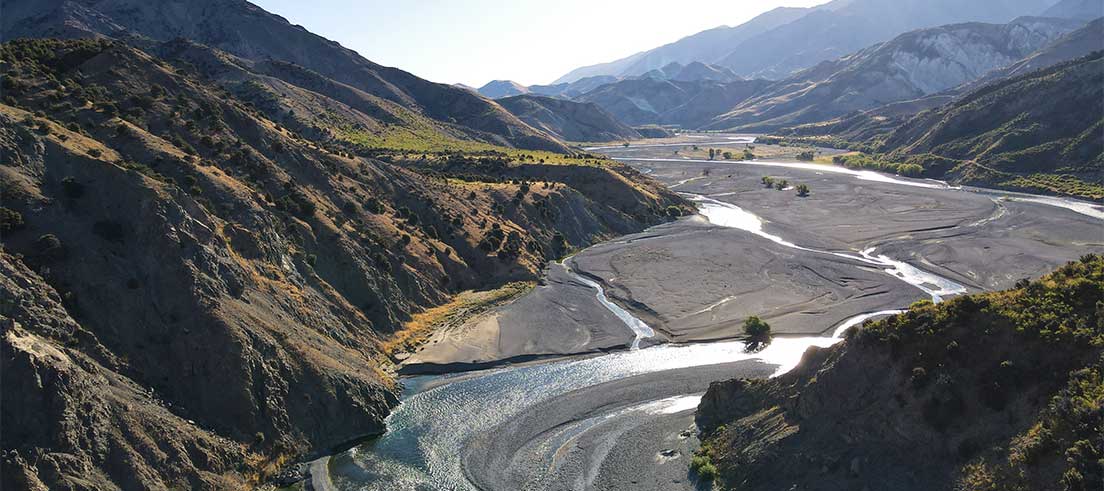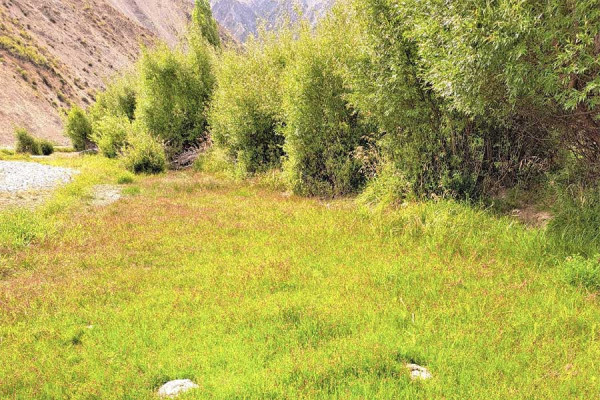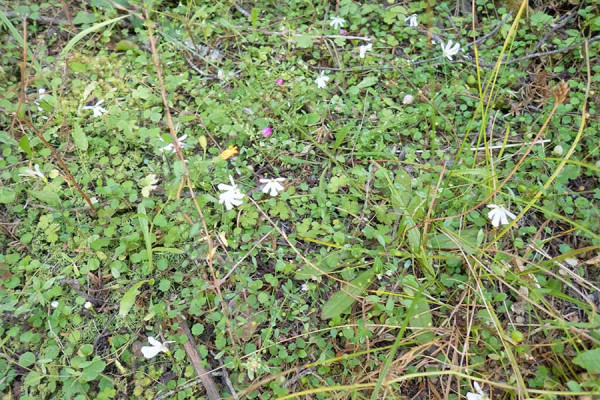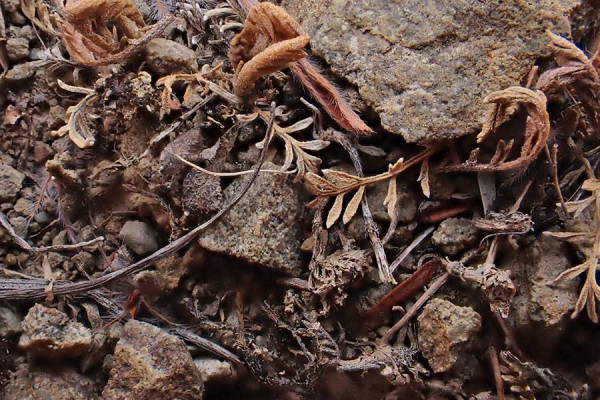
Pulling together to tackle weeds on the Waiau Toa/Clarence River
Our biodiversity advisor Jason Butt has been rafting the Waiau Toa/Clarence River to help identify and map weeds.
River rafting might not be the first thing that comes to mind when you think of weed control, but sometimes it’s the best way, or even the only way, to get to isolated spots that need surveying.
Earlier this month, our principal biodiversity advisor Jason Butt joined staff from Boffa Miskell, Department of Conservation (DOC) and Clarence River Rafting on a surveying expedition to tackle weeds and protect biodiversity around the precious Waiau Toa/Clarence River.
Jason’s role on the expedition was to help identify weed and plant species and provide input on how our work with neighbouring stations can support weed control on the river.
Why bother with weeds?
Woody weeds such as willow, broom, and gorse have the potential to restrict the dynamic nature of the Waiau Toa as a braided river system.
These invasive plants tend to establish dense thickets along the riverbanks, altering the river's flow patterns and reducing its ability to form and maintain braided channels.
This can lead to the river becoming more confined and less able to adjust to natural fluctuations in flow, impacting its ecosystems and the surrounding landscape.
Weeds also have a major impact on our river birds. When they become established in nesting areas, especially on braided river islands, it forces river birds to nest closer to the water on the island’s edge.
"When birds settle on the edge of islands, there is much more risk of their nests being destroyed by floods or attacked by predators,” explained Jason.
Predators can also use weeds as cover to sneak up on them.
Rare finds and secret daisy populations
The Waiau Toa is home to some very rare plant species including the pygmy goosefoot (Dysphania pusilla) and the slender button daisy (Leptinella filiformis).
"Slender button daisy was thought to be extinct in the wild for decades until an off-duty DOC ranger and QEII representative found a patch of an unknown plant on a rafting trip. They brought samples of it back to the office where another curious staff member was able to identify it. The Waiau Toa is the only known place this daisy is found in the wild," said Jason.
The presence of these rare plants means it’s essential to closely inspect and map weed areas before beginning control work.
"When you get up close you can see threatened plants hiding in the weeds. If you didn’t inspect the ground before control, you could wipe out precious species without even knowing it," said Jason.
Species mapped during the trip
Special or rare plants observed:
- Slender button daisy (Leptinella filiformis) - Threatened – Nationally Critical (formerly extinct in the wild)
- Pygmy goosefoot (Dysphania pusilla) - Threatened – Nationally Endangered (formerly extinct)
- Pink broom (Carmichaelia glabrescens)
- Muehlenbeckia ephedroides - Threatened – Nationally Vulnerable
- Gossamer grass (Anemanthele lessoniana) - At Risk - Relict
- Carex inopinata - Threatened – Nationally Vulnerable
- Three square rush (Schoenoplectus pungens) - Unusual in a non-estuarine environment
Weeds – Waiau Toa’s Top 10 Most Wanted List:
- Purple willow (Salix purpurea) - This species of basket willow is a huge threat to open gravelly rivers (braided rivers). It produces seeds in vast numbers that then disperse by wind, potentially fully occupying bare gravel in a season.
- Grey willow (Salix cinerea) - The grey willow produces seeds and is a major threat to rivers and wetlands. It is widely established throughout Canterbury but present in relatively low numbers in Waiau Toa.
- Crack willow (Salix xfragilis) - Only a male tree clone of this species is present in New Zealand, it doesn’t produce seeds but is adept at establishing from green twigs that readily break off and root to become new trees.
- False tamarisk (Myricaria germanica) - This plant has very limited distribution in the middle and lower reaches of Waiau Toa, it invades gravels and riverbeds forming dense stands.
- Gorse (Ulex europaeus) - Gorse is a well-known shrubby weed that is well adapted to braided rivers.
- Broom (Cytissus scoparius) - This weedy shrub is well adapted to braided rivers.
- Butterfly bush (Buddleja davidii) - The butterfly bush is very limited in distribution in the upper and middle reaches of Waiau Toa but it invades gravels and riverbeds so is important to control.
- Field horsetail (Equisetum arvense) - This weed is thought to be absent from most of Canterbury. Three patches were observed on this trip along with a previous observation in the Swale Stream (a tributary of the Waiau Toa) and two recent records from the mouth of the Waiau Toa. It can invade wetlands and damp sand or gravel forming dense monocultural stands and is very difficult to control.
- Tree lupin (Lupinus arboreus) - This lupin smothers river gravels where specially adapted plants live and birds nest.
- Rowan (Sorbus aucuparia subsp. aucuparia) - The rowan is an introduced tree that invades indigenous shrubland.
*Conifers were not mapped on this trip as they are being dealt with under a different programme.
A battle strategy to tackle invasive weeds
The findings will be used by Boffa Miskell (the delivery partner for Toitū Te Whenua LINZ) to review the current weed control strategy and form an updated management plan.
This will lay out a fresh battle strategy to fight the invasive species that are threatening habitats, river birds and biodiversity along the riverbed.
It will also help the agencies working in the area prioritise their resources to where they’ll have the most impact for biodiversity and make sure high value habitat areas are kept as clear of weeds as possible.
Learning for the future
"Some days, it’s really easy to get out of bed and come to work,” said Jason. “The rafting trip was a real success and we learned things we never could have seen via helicopter or desktop survey. This river has very high biodiversity values and it’s so important we protect it."
Our biodiversity team will continue to work with our skilled partners at Boffa Miskell, LINZ, and DOC on tackling the weeds around the Waiau Toa River.
We'll also keep collaborating with the team at Clarence River Rafting Guides, who see conservation of the river as an important part of their business. They already voluntarily set and check predator traps on their expeditions and have now learned how to spot and control problematic weed species as well.
Together, we can support better biodiversity outcomes and healthy ecosystems at the Waiau Toa River.






